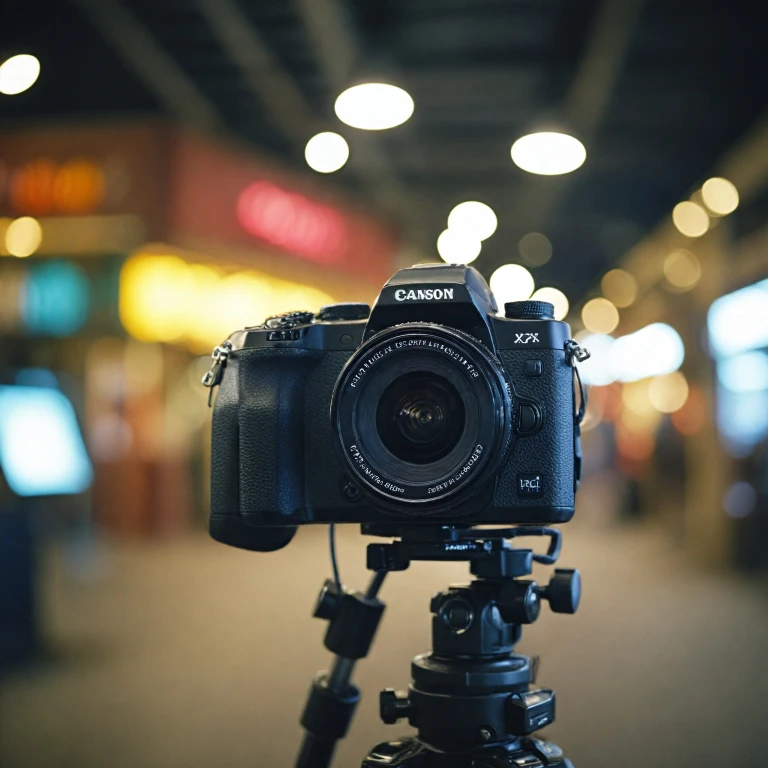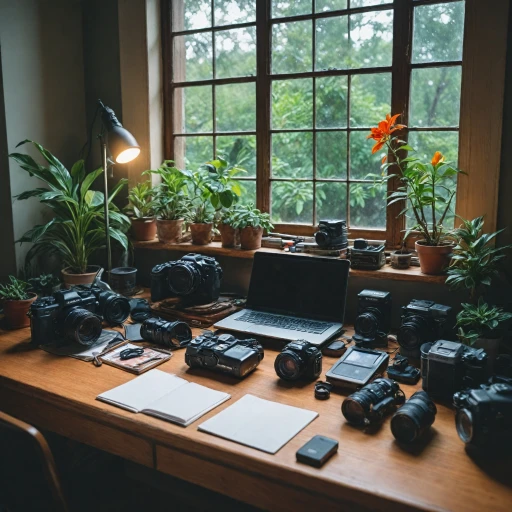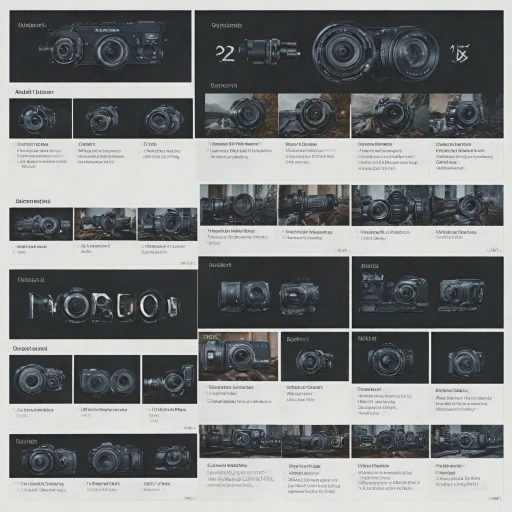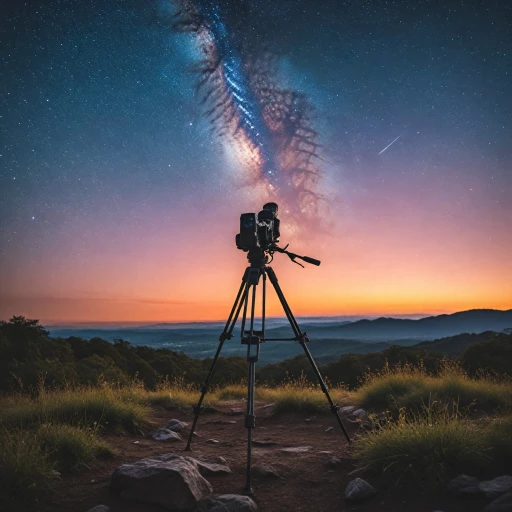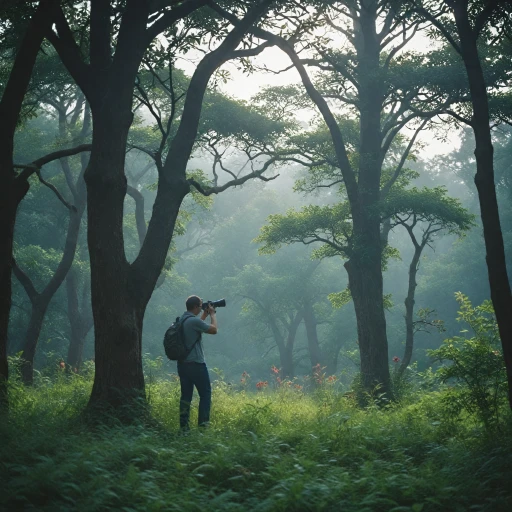
Understanding Autofocus Technology
Demystifying Autofocus Mechanics
Understanding the intricacies of autofocus technology in digital cameras is crucial for unlocking the full potential of your photography skills. The process of focusing involves a sophisticated interplay of mechanical and optical systems designed to ensure that your subject is clearly captured, enhancing the overall quality of your images.
A key component of this system is the focus motor, which automatically adjusts the focus position to secure precision every time. This motor is often controlled through advanced algorithms that determine the ideal focus point, eliminating the need for manual adjustments. For photographers working with telescopic lenses or a schmidt cassegrain optical tube, the motorized autofocus system can be a game-changer, allowing for seamless focusing on distant objects, such as stars or distant wildlife.
The autofocus process often includes multiple focuser steps and precise step sizes to achieve the best focus. This process handles various lens corrections and compensates for focus shift across different zoom ranges, ensuring that the focus point remains accurate. In more complex setups, like incorporating a filter wheel or moving through telescope positions, autofocus aids in maintaining image clarity without user intervention.
For those looking to elevate their photography experience further, utilizing tech enhancements like the ZWO EAF (Electronic Automatic Focuser) can be beneficial. This device, known for its reliability, reduces backlash and ensures smooth autofocusing across numerous exposures, particularly advantageous during extended time-lapse photography.
Familiarizing yourself with your camera’s autofocus capabilities will empower you to harness its features effectively, thus resulting in professional-grade images with every shot. For those eager to delve deeper into digital photography and camera accessories, consider checking out ways to enhance the performance of your equipment further.
The Importance of Autofocus in Photography
The Crucial Role of Autofocus in Capturing Perfect Shots
In the world of digital photography, autofocus is an indispensable component for achieving clarity and precision in images. Whether you're a seasoned photographer or a novice, learning the intricacies of focusing systems can greatly enhance your skills. Autofocus technology allows photographers to quickly select the optimal focus point ensuring that their subjects are captured with sharpness and detail.
In action-oriented shots or environments with dynamic movements, the ability to rapidly change focus through a motorized focuser is essential. This precision is particularly crucial when using equipment like telescopes or more complex devices such as a Schmidt-Cassegrain optical tube. As photographers adjust their focus, they are also balancing focus step size and exposure time, which significantly influence the final image quality.
The role of a focuser is not just to move; it also involves various technical elements like backlash adjustments and the integration of a ZWO EAF, particularly when gears or a dovetail setup is in play. The focuser steps and position are meticulously controlled, often using a hand controller, to achieve the best focus that matches creative intentions.
In practical terms, a photographer may encounter auto focusing systems that assist in managing and automating these adjustments. These systems aim to minimize manual errors, making the process as straightforward as adding an eaf kit to your cart when considering free shipping options. This automated focus control not only saves time but ensures consistency across different lighting and compositional scenarios.
Types of Autofocus Systems
Exploring Different Autofocus Technologies
When it comes to digital cameras, understanding the different autofocus systems is crucial for achieving the perfect focus on your subjects. Let's delve into the various autofocus technologies that shape the way we capture images today.
Firstly, there are Phase Detection Autofocus (PDAF) systems, which are commonly used in DSLRs. This method uses a separate focus sensor and tiny mirrors to quickly and accurately determine the focus point. It's especially useful for capturing fast-moving subjects due to its speed and efficiency.
On the other hand, Contrast-Detection Autofocus is often found in mirrorless cameras and compact cameras. This system works by analyzing the contrast peaks in the image; it adjusts the focus motor incrementally until peak contrast is achieved, indicating the best focus. While slower, it offers precise focusing in static scenes.
Advancements in autofocus systems have introduced hybrid systems that combine the benefits of both PDAF and Contrast Detection. This hybrid approach ensures faster focusing speed and enhances accuracy, making it apt for diverse shooting conditions.
Beyond traditional camera autofocus systems, astronomers and telescope enthusiasts often employ dedicated focusers such as the ZWO EAF (Electronic Automatic Focuser) for Schmidt Cassegrain telescopes. Known for its ability to adjust focus point with minimal backlash, the ZWO EAF allows for fine control over the optical tube's focus position, improving the clarity of celestial objects. It integrates multiple focuser steps to achieve precise auto focusing, optimizing time spent on manual adjustments.
For photographers and astronomers seeking precision in capturing unique moments, understanding autofocus technology is crucial. To further enhance your photography skills and explore advanced camera settings, you might find mastering low-light photography to be an invaluable resource.
Choosing the Right Autofocus for Your Needs
Picking the Ideal Autofocus for Your Photography Needs
When it comes to choosing the right autofocus system for your photography needs, several factors come into play to ensure optimal shot quality. Whether you're using a telescope with a schmidt cassegrain optical tube or just exploring with a standard digital camera, knowing your requirements is crucial.- Define Your Purpose: Clarify what you aim to capture. Are you focused on astrophotography where a telescope and auto focusing can enhance your shots? Or are you shooting dynamic sports events requiring swift auto focus capabilities?
- Autofocus System Types: The decision between phase detection and contrast detection autofocus systems is essential. For those seeking speed and precision in changing light conditions, phase detection is advantageous. Considered best for complex scenes, contrast detection provides excellent precision despite slower processing time.
- Evaluate Equipment: Take into account your focuser, focus motor, and other peripherals like a zwo eaf or eaf kit. Familiarity with your equipment will guide you in selecting the right autofocus system, ensuring seamless integration and control over focus position and exposure time.
- Customization and Control: Systems offering manual control such as hand controller options or dovetail interfaces might be necessary for detailed work. Options like zwo eaf provide an added advantage for auto focusing and are often considered top-of-the-line by enthusiasts.
- Performance Considerations: Ensure your system minimizes backlash, allows precise step size adjustments, and supports features like filter wheel operation and backlash compensation. These factors significantly influence the repeatability and reliability of your autofocus performance.
Common Autofocus Challenges and Solutions
Overcoming Autofocus Challenges
Autofocus is a game changer in digital photography, offering precision and efficiency. However, its application can come with its own set of challenges. Understanding these obstacles and learning how to address them can greatly enhance your photography experience.
Common Challenges with Autofocus
- Focus Hunting: This is when the camera struggles to lock onto the subject, causing the lens to move back and forth. It often occurs in low-light situations or with low-contrast subjects.
- Backlash: In the synchronization of the focus motor and lens assembly, backlash may appear affecting the accuracy of focus steps. This can be particularly challenging in astrophotography, where precision is key.
- Temperature Variations: The optical tube might expand or contract with temperature changes, affecting focus point precision.
Effective Solutions
- Use of Focus Motors and EAF: Installing an electronic autofocus (EAF) system can facilitate smoother and more accurate focusing. Systems like ZWO EAF allow for fine control over focuser steps, ensuring the best focus is consistently achieved.
- Regular Calibration: Regularly calibrating your autofocus can mitigate variations introduced by temperature changes. It's especially important when moving optical tube instruments like Schmidt Cassegrain telescopes.
- Exposure Time Adjustments: In low-light conditions, slightly increasing the exposure time can help the camera detect enough contrast to lock on effectively.
- Selecting the Right Autofocus Mode: Depending on shooting conditions and subject movement, choosing the correct autofocus mode can overcome issues like focus hunting, ensuring the autofocus system is at its optimal performance.
By addressing these challenges, photographers can navigate the complexities of using autofocus systems more effectively, ensuring top performance each time they capture an image. Mastering these solutions will lay a solid foundation for further exploration and optimization in the realm of digital photography.
Tips for Optimizing Autofocus Performance
Maximizing Autofocus Capabilities
Autofocus mechanisms in digital cameras can vastly enhance the quality of your photography, but tapping into their full potential requires some know-how. Here are some strategies to optimize autofocus performance:- Understand Your Autofocus System: Before anything else, get to know the specific autofocus system used by your camera. Whether it's phase detection or contrast detection, understanding how your camera achieves focus can guide you in selecting the best settings for your needs.
- Set the Right Focus Point: Usually, cameras allow users to select focus points. Ensuring that you position the focus point on the main subject can dramatically increase the clarity of your photos. Experiment with switching between single-point and multi-zone focus modes for different shooting scenarios.
- Adjust Exposure Time: Shorter exposure times can enhance autofocus performance by reducing motion blur, providing clearer conditions for the autofocus motor to lock onto the subject.
- Reduce Focuser Backlash: Backlash in the focusing mechanism, often observed in telescopes and cameras with mechanical components, can hinder autofocus accuracy. Consider using an electronic focus assist (EAF) kit to minimize this.
- Deploy Auto Focusing with Focus Motor: Use a focus motor to enable automated adjustments for continuous focus in dynamic environments. This is particularly helpful in situations where the subject is in constant motion.
- Fine-Tune Step Size and Positions: Carefully adjusting the focus step size and focuser position can lead to achieving the best focus more swiftly and accurately. Cameras with customizable step sizes allow for greater control over focus transitions.
- Leverage Technology Add-ons: Consider integrating accessories like a ZWO EAF or a hand controller with your digital camera setup. These tools provide added precision and ease when fine-tuning focus and can be valuable in professional shooting environments.
- Maintenance and Calibration: Regularly calibrate your autofocus system to ensure peak performance. Check for any misalignments or loose components on your optical tube or dovetail that may affect focus accuracy.
